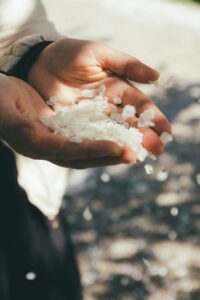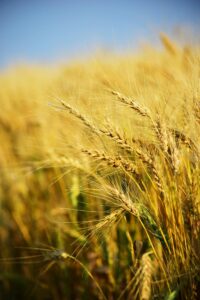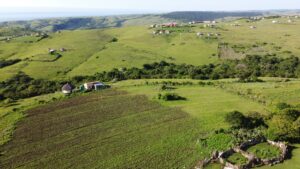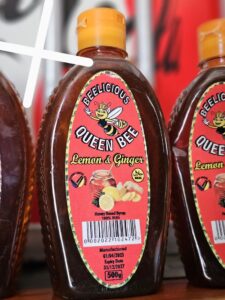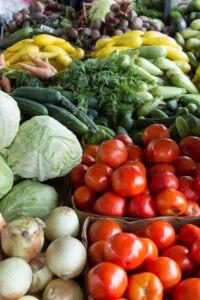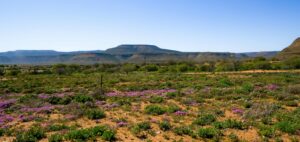Introduction
Sugarcane is cultivated in tropical and subtropical climates in areas with a plentiful supply of water. Approximately 800mm per annum is needed for a successful crop. Lower rainfall than this leads to difficult times for the industry.
There is a vast global market for sugarcane derivatives.
- These are prevalent in the modern diet both as raw and refined sugar, syrups, specialised sugars by-products and co-products.
- Molasses is used in animal feed, baking and the making of ethanol and rum.
- Bagasse, used as a fuel for boilers and kilns; the production of paper, paperboard products, bioplastics, agricultural mulch and as a raw material for the production of chemicals. Uses of the dried filtercake include utilisation as an animal feed supplement, fertiliser and as a source of sugarcane wax.
International business environment
Sugarcane producers across the world are moving away from a sugar-only output to include energy (electricity and biofuels), and other biobased products (e.g. bioplastics, biochemicals). For this reason, global sugar prices can be driven more by energy prices than by consumer demand for sugar.
- Top growers: Brazil, India, EU, China, and Thailand (SA is in position 16) (USDA, 2025)
- Top exporters: Brazil, Thailand, India, Australia, and Guatemala (SA is in position 9) (USDA, 2025)
- Top importers: China, Indonesia, India, EU, and United Arab Emirates (USDA, 2025)
Further reference:
- World Sugar Research Organisation (WSRO) https://wsro.org
- International Society of Sugar Cane Technologists https://issct.org
- World Association of Beet and Cane Growers (WABCG) https://wabcg.org
- www.sugaronline.com – Sugaronline, “the leading independent sugar & ethanol site”
- Find the USDA Foreign Agricultural Service’s Sugar: World Markets and Trade reports at https://apps.fas.usda.gov/psdonline/circulars/sugar.pdf
- Find the sugar chapter in the annual Organisation for Economic Co-operation and Development (OECD)–Food and Agriculture Organisation (FAO) Agricultural Outlook.
- Sugarcane is one of the crops from which bioplastic is made. The global bioplastics market size was valued at USD 15.57 billion in 2025 and is projected to be worth USD 44.77 billion by 2030. A compound annual growth rate (CAGR) of 19.5% from 2025 to 2030 (Grand View Research, 2025). Find this report at www.grandviewresearch.com/industry-analysis/bioplastics-industry
- Find the Fairtrade International page on sugar at www.fairtrade.net/product/sugar.
- Read about how WWF is involved with sugarcane at www.worldwildlife.org/industries/sugarcane
SOUTH AFRICA: IMPORTS AND EXPORTS
- Raw sugar exports go to South Korea, UK and Malaysia. Other markets have included US, Spain and Singapore (USDA, 2025).
- Refined sugar exports go to the UK, Namibia and Botswana (USDA, 2025).
- Raw sugar imports come mostly from Eswatini.
- Refined sugar comes from Eswatini, Brazil and India (USDA, 2025).
Local business environment
Sugar in South Africa is mostly used for direct human consumption and as an ingredient in beverages and confectionery products. Direct home consumption accounts for 51 percent of domestic sugar sales, with food processing accounting for 49% (USDA, 2025).
Sugarcane is grown mostly in KwaZulu-Natal (80%) and, under irrigation, in Mpumalanga (20%) (USDA, 2025).
South Africa’s sugar industry, valued at around R25-billion, directly and indirectly supports over 300 000 jobs (Reuters, 2025).
Deteriorating conditions motivated the development of the South African Sugar Master Plan in 2020 (see “National strategy and government contact” heading). Challenges to the sector have included production costs substantially outstripping general inflation, loadshedding, civil unrest, and a dry spell at the beginning of 2024.
Farmers have been opting for alternative crops like macadamias, bananas, citrus and avocados. These are high-value, capital-intensive crops and so it is more than likely that hectares lost to sugarcane will be lost for a long time to come (BFAP, 2019). It has previously been argued that permanent workers can be absorbed into new farming activities but the outlook for seasonal workers is more problematic (BFAP, 2021).
The industry reported that the 2018 Health Promotion Levy (HPL) (the “sugar tax”) led to more than 16 000 job losses and R2- billion in lost revenue in the first year alone (Arnoldi, 2025). Government was expected to increase the HPL in 2025 but did not. This allows the industry more time to diversify and to implement transformation plans (USDA, 2025).
The industry has identified four areas of diversification – cogeneration, biofuels, beneficiation of agricultural residues such as biogas and biobased products.
- Biofuels – implementation of greenfield and brownfield fuel ethanol projects in the SA sugar industry
- Cogeneration – operationalise sugarcane cogeneration independent power producers as part of the energy mix in South Africa
- Beneficiation of agricultural residues such as biogas – commercialisation of biogas plants on a range of biogas plants
- Biobased products – biobased niche products from sugarcane such as bioplastics and biochemical.
All four diversification areas aim to harness the full value of the sugarcane stalk producing sugarcane-based products which have already been manufactured in other parts of the African continent and the world.
Source: www.sasugarindustrydirectory.co.za
Further reference:
- The South African Sugar Journal is “the official Voice of the South African Sugar Industry”. Find editions at www.sasugar.co.za
- Find the “Sugar Master Plan” option at https://sasa.org.za. The document provides an overview of current conditions in the industry, and a roadmap for the way forward.
- The annual Bureau for Food and Agricultural Policy (BFAP) Baseline Agricultural Outlook includes a section which looks at sugarcane. Find the latest Baseline at www.bfap.co.za.
- The US Department of Agriculture Foreign Agricultural Service (FAS) periodically covers the South African and eSwatini sugar industries. Find these reports on the Internet.
- Find the latest Sugar Market Value Chain Profile on the Directorate Marketing pages on the Department of Agriculture website www.nda.gov.za.
- Refer to the “Some articles” sub-heading further down this page.
For the newcomer
The South African Sugarcane Research Institute (SASRI)’s extension service provides the essential link between SASRI researchers and farmers through consultation and feedback. Find contact details of extension managers and extension specialists at https://sasri.org.za/extension-and-biosecurity..
The South African Cane Growers’ Association provides technical skills training for new and emerging cane growers, accounts and financial management workshops, regional economic advisors, a grower support service officer and access to a special VAT and diesel dispensation for small-scale growers.
The South African Farmers Development Association (SAFDA) provides training, but also has fertiliser, logistics, diesel and farm management initiatives as well as grower support staff to benefit growers. Find contact details for agricultural managers, district co-ordinators and grower support officers at https://sa-fda.org.za.
The milling companies also provide extensive service in support of the cane-growing operations of small- medium- and large-scale black farmers.
National strategy and government contact
- Find the “Sugar Master Plan” option at https://sasa.org.za. in which all partners (the sugar industry, labour, government, retailers and wholesalers, and industrial sugar users) committed to a phased approach to turn this industry around.
- The Portfolio Committee on Agriculture was provided with updates at the 3 September 2024 meeting “Poultry Master Plan & Sugar Master Plan: dtic briefing; Agro-processing Master Plan: DoA briefing (with Deputy Minister)”. Read the minutes at https://pmg.org.za/committee-meeting/39400.
- Sugarcane is an important crop for South Africa because it creates jobs, generates foreign income and contributes to agricultural value-addition (Nkunjana, 2022). It has it has both high-growth-potential AND is labour intensive (Sihlobo, 2018).
- Read about the Health Promotions Levy (the sugar tax) at www.sars.gov.za/customs-and-excise/excise/health-promotion-levy-on-sugary-beverages/.
Sugar and renewable energy
Globally, sugarcane industries have responded to the need for renewable energy, by diversifying from being producers of sugar to sugar and energy.
The biomass called bagasse, produced during the processing of sugarcane, can be used to generate steam and electricity. Sugar mills in South Africa already do this for their own energy needs. They have the capacity to inject significant amounts of surplus power into the national grid, which would make a significant contribution to green and renewable energy when this does become a priority for government.
Role players
View the Premium Listings below (scroll down or click on “Premium Listings” on the Table of Contents to the right).
Further reference:
Associations
- Also of relevance is Association of SA Sugar Importers (Asasi); Beverage Association of South Africa (BEVSA) (see www.bevsa.co.za); and the South African Sugar Converters’ Association (Sasca).
Companies involved
- Find details of the milling companies – Gledhow, Illovo Sugar Limited, Tongaat Huletts Sugar Limited (Vision Sugar South Africa), RCL Foods Sugar & Milling, UCL Company Limited and Umfolozi Sugar Mill (Pty) Ltd – and of their milling operations in the South African Sugar Industry Directory at www.sasugarindustrydirectory.co.za.
Websites and publications
Visit the websites listed earlier on this page.
- SASA, CANEGROWERS and SAFDA all have publications available which describe in full the diverse aspects of the sugar industry. Visit their websites.
- Books, technical guides, newsletters and manuals are available from the South African Sugarcane Research Institute (SASRI). Find these on their website, https://sasri.org.za.
- Grower notes on sugarcane are available on the Department of Agriculture website www.nda.gov.za.
- Available from the ARC-Agricultural Engineering (ARC-AE) is the booklet “Agro-processing of Industrial Crops (chicory, coffee, sugar cane, tea)”. Visit www.arc.agric.za or call 012 842 4017.
- Find research done by the National Agricultural Marketing Council (NAMC) on sugar, including alternative uses of sugar. Go to www.namc.co.za.
- https://saveoursugar.org.za “Help us save South Africa’s sugar industry”
Some articles
- Funke T. 2025, December 03. “Heavily subsidised imported sugar is undermining SA’s diversification drive.” Bizcommunity. Available at www.bizcommunity.com/article/heavily-subsidised-imported-sugar-is-undermining-sa-diversification-drive-841603a
- Spandiel OA. 2025, November 14. “Mpumalanga sugar industry acts against huge surge in imports.” Farmer’s Weekly. Available at www.farmersweekly.co.za/agri-news/south-africa/mpumalanga-sugar-industry-acts-against-huge-surge-in-imports
- Manoko T. 2025, November 10. “Bitter taste for SA sugar industry as imports surge.” Food for Mzansi. Available at www.foodformzansi.co.za/bitter-taste-for-sa-sugar-industry-as-imports-surge
- Reporter. 2025, November 05. “SA sugar industry warns of crisis as imported sugar surges 400%.” Bizcommunity. Available at www.bizcommunity.com/article/sa-sugar-industry-warns-of-crisis-as-imported-sugar-surges-400-629941a
- Buthelezi S. 2025, November 04. “Crisis looms for South African sugar growers as imports skyrocket.” IOL. Available at https://iol.co.za/mercury/2025-11-04-crisis-looms-for-south-african-sugar-growers-as-imports-skyrocket
- Reuters. 2025, September 4. “South Africa’s sugar farmers face ‘double whammy’ from Trump tariffs, cheap imports.” Politty. Available at www.polity.org.za/article/south-africas-sugar-farmers-face-double-whammy-from-trump-tariffs-cheap-imports-2025-09-04
- Khumalo K. 2025, August 18. “Tau sweetens the deal to save SA sugar industry jobs.” Business Day. Available at www.businesslive.co.za/bd/economy/2025-08-18-tau-sweetens-the-deal-to-save-sa-sugar-industry-jobs/
- Pillay Y. 2025, July 10. “SA canegrowers fear 30% tariff on sugar exports to the US will jeopardise industry.” IOL. Available at https://iol.co.za/business-report/economy/2025-07-10-sa-canegrowers-fear-30-tariff-on-sugar-exports-to-the-us-will-jeopardise-industry/
- West E. 2025, July 3. “Tongaat Hulett’s sugar mills lead South Africa in recovery performance.” IOL. Available at https://iol.co.za/business-report/companies/2025-07-03-tongaat-huletts-sugar-mills-lead-south-africa-in-recovery-performance/
- Pillay Y. 2025, June 16. “South African sugar growers urge action against unfair trade practices impacting industry.” IOL. Available at https://iol.co.za/business-report/economy/2025-06-16-south-african-sugar-growers-urge-action-against-unfair-trade-practices-impacting-industry/
- Campbell R. 2025, April 2. “Consortium seeking to buy Tongaat Hulett secures essential credit approval”. Engineering News. Available at www.engineeringnews.co.za/article/consortium-seeking-to-buy-tongaat-hulett-secures-essential-credit-approval-2025-04-02
- TradeProbe Issue 100 (March 2025) has an article “South Africa’s sugar trade trends and opportunities for growth.” Find it at www.namc.co.za/wp-content/uploads/2025/04/Trade-Probe_Issue-100-v4-29042025.pdf
- Reporter. 2025, February 23. “Sustainability of black farmers is crucial for SA’s sugar industry”. SA News. Available at www.sanews.gov.za/south-africa/sustainability-black-farmers-crucial-sas-sugar-industry
- Burger S. 2025, February 19. “Court dismisses RGS Group’s application to interdict Tongaat Hulett business rescue process”. Engineering News. Available at www.engineeringnews.co.za/article/court-dismisses-rgs-groups-application-to-interdict-tongaat-hulett-business-rescue-process-2025-02-19
- Masiwa. 2025, February 18. “SA sugar industry remains fragile despite progress, says Mhlaba”. Food for Mzansi. Available at www.foodformzansi.co.za/sa-sugar-industry-remains-fragile-despite-progress-says-mhlaba/
- Arnoldi M. 2025, February 4. “SA Canegrowers calls sugar tax increase activism misguided, uninformed”. Engineering News. Available at www.engineeringnews.co.za/article/sa-canegrowers-calls-sugar-tax-increase-activism-misguided-uninformed-2025-02-04
- Burger S. 2024, December 18. “Distressed JSE-listed sugar producer Tongaat Hulett has announced that it will sell all its assets and operating businesses in South Africa to Vision Sugar South Africa”. Polity. Available at www.polity.org.za/article/tongaat-hulett-to-sell-all-south-african-assets-operating-businesses-to-vision-sugar-2024-12-18
- Mdluli H. 2024, December 10. “Canegrowers seek sustainable future and fair policies”. Food for Mzansi. Available at www.foodformzansi.co.za/canegrowers-seek-sustainable-future-and-fair-policies
- Reporter. 2024, November 12. “SA’s sugarcane output drops by 10% amid drier conditions”. Bizcommunity. Available at www.bizcommunity.com/article/south-africas-sugarcane-output-drops-by-10-amid-drier-conditions-477169a
- Burger S. 2024, November 7. “dtic to engage on sugar tax, but industry must diversify and boost competitiveness”. Engineering News. Available at www.engineeringnews.co.za/article/dtic-to-engage-on-sugar-tax-but-industry-must-diversify-and-boost-competitiveness-2024-11-07
- Burger S. 2024, October 2. “Sugarcane farmers appeal for sugar tax repeal or moratorium on increases until 2030”. Engineering News. Available at www.engineeringnews.co.za/article/sugarcane-farmers-appeal-for-sugar-tax-repeal-or-moratorium-on-increases-until-2030-2024-10-02
- Mdluli H. 2024, September 5. “Empowering South Africa: The sweet impact of choosing local sugar”, Bizcommunity. Available at www.bizcommunity.com/article/empowering-south-africa-the-sweet-impact-of-choosing-local-sugar-479399a

